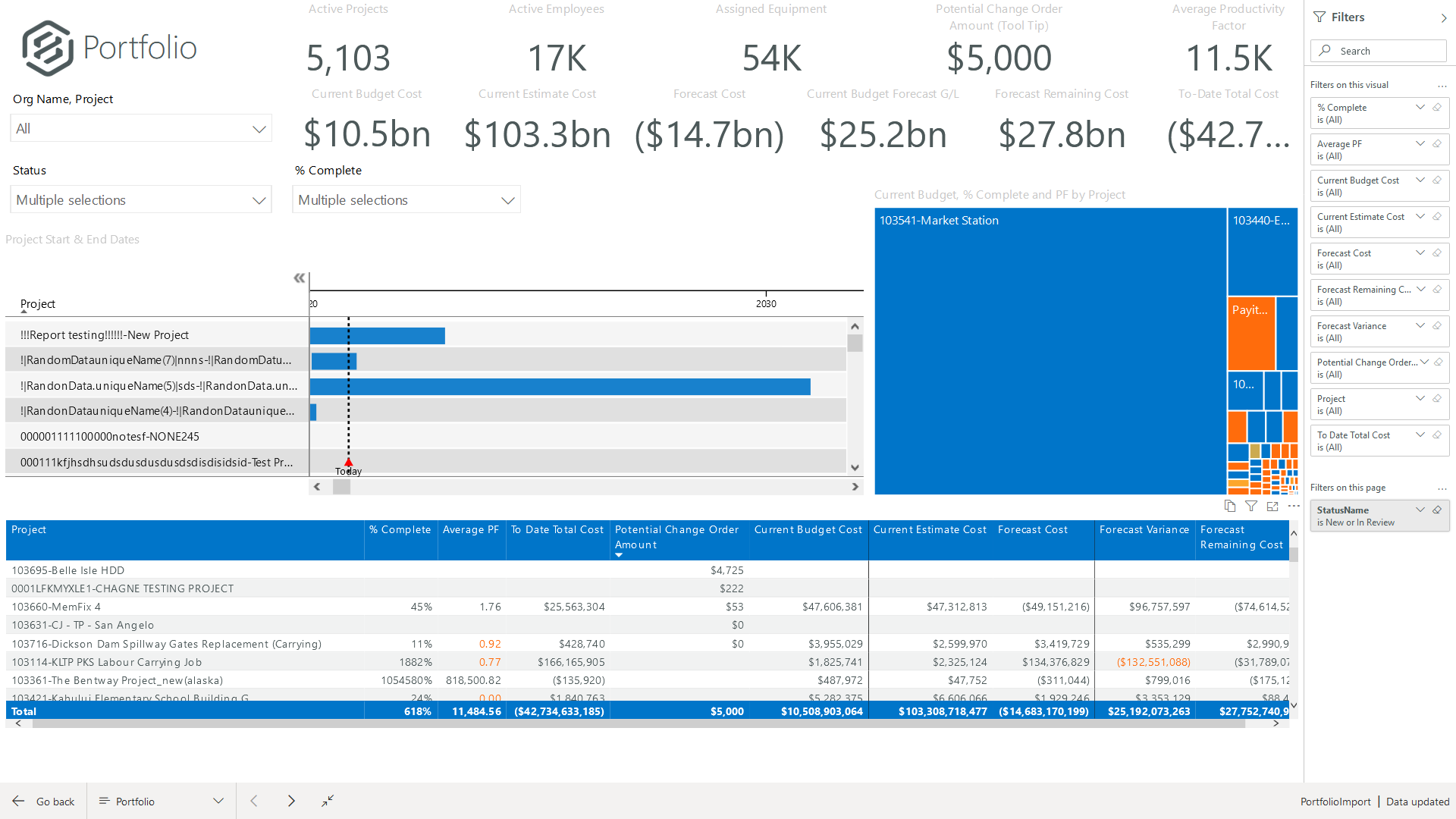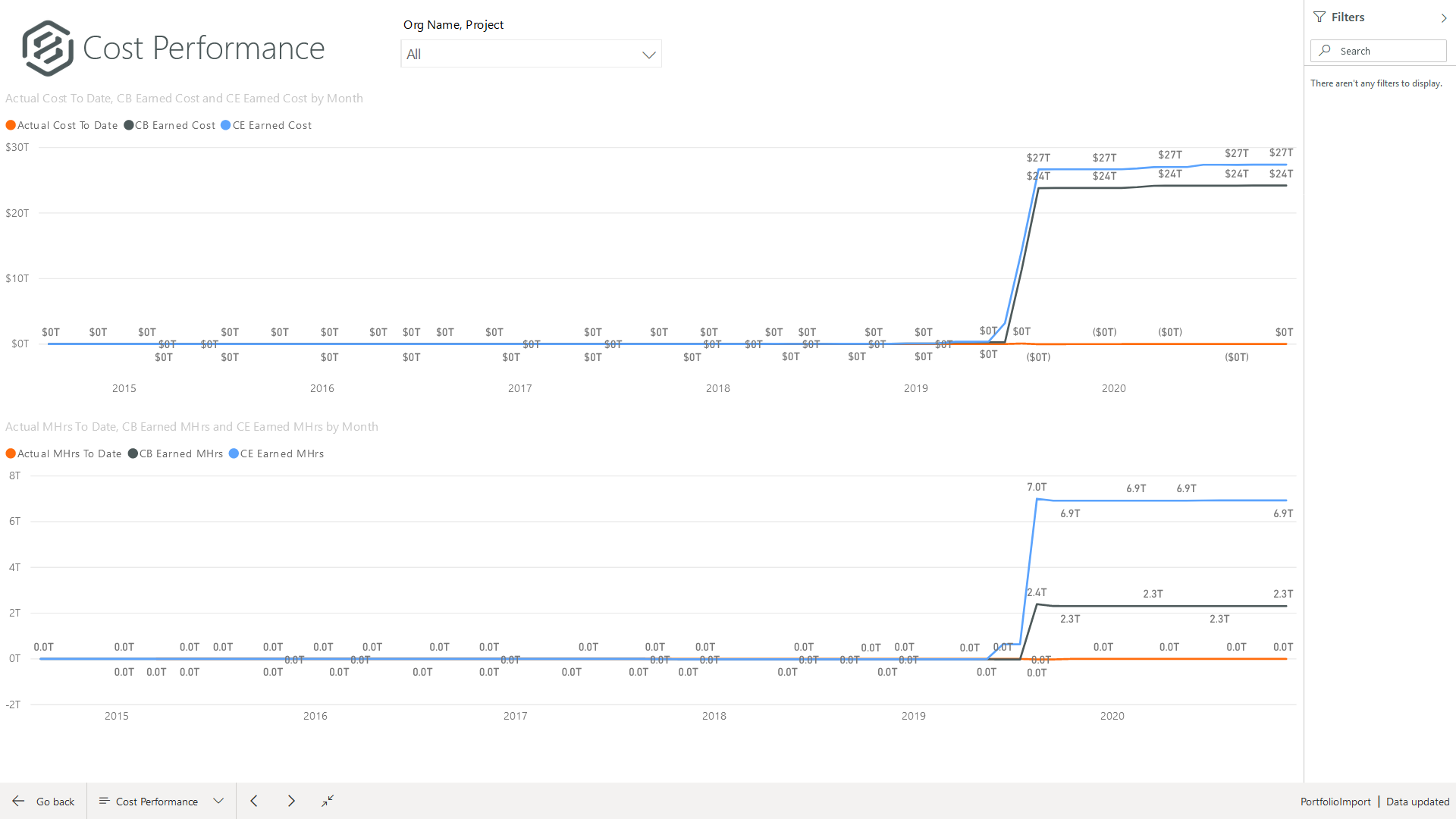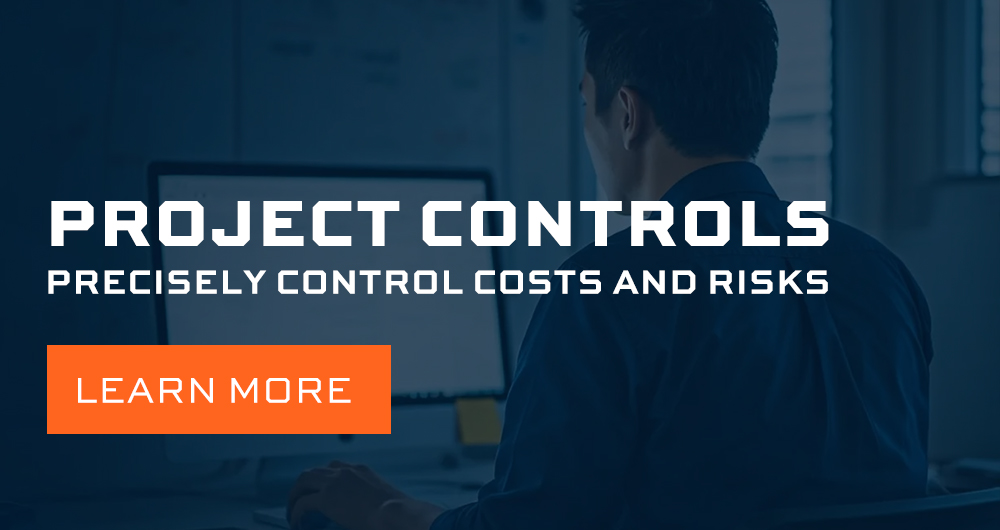With over a third of all construction projects experiencing at least one major change, achieving greater information visibility within capital projects — and the ability to pivot plans where needed — will have a direct impact on determining those project outcomes. But following the traditional method of pouring through pages and pages of detail on every project wastes time, and time is money. This is why managing by exception, or outlier, has become the preferred method for time and cost savings. To manage this way, however, you need to have the right metrics and visualizations in front of you to help ensure attention is being placed on the right priorities at the right time. How do you “see” or visualize such data all in one place? With today’s best, most advanced portfolio dashboards.
Focusing Your Resources
Imagine this scenario: You get to the jobsite, sit down at your desk in the trailer, log in to your computer, kick off a couple reports, then go grab coffee while you wait for them to run. Once the reports are finished running and you are halfway through your coffee, you open them up in Microsoft Excel® and start going through the numbers line by line. Sound familiar? The process of coming in every day, opening up your daily reports and searching through several line items of detail is one we hear and see often. And while the daily routine of checking in on your project to see what might be at risk is a good one, it doesn’t scale very well past an individual project and might be costing you time.
This is partly because the requirements and complexity of capital projects are increasing. And with scope and scale increasing as well, so does an increased risk for cost overruns, schedule delays, unexpected issues, etc. While simply throwing more resources at this problem might help in the short term, in the long run, adding overhead only narrows your profit margin and potentially creates inefficiencies from a lack of standard operating procedures. This is why stakeholders on your project need to have access to the right information at the right time to drive their decisions. Wasting time searching through reports for project status and issues takes stakeholders and other resources away from what they should be focused on, which is managing the work.
Visualizing the Right Data
This is where the power of dashboards and visualizations can really help you. Having project data readily visualized provides the information needed without requiring someone to dig for an answer, making it easy to quickly compare projects, crews and cost codes in a simple chart. It should then be much simpler to determine which project currently has issues and where your attention should be focused. Managing by exception can become the rule, i.e., digging into paper reports and pouring through the detail only when absolutely necessary, with those types of reports backed up for access versus being the primary source of information.
Imagine how powerful it would be to start your day already knowing where you need to focus time and energy. You can now see that a specific crew continues to miss its plan, for example. Now, instead of having to search through pages of information to find that answer, a convenient dashboard provides it to you as the first thing you see. Or, if you are an owner who manages an entire portfolio of projects, you can now instantly see a project that might be starting to have trouble. And instead of having to reach out to each contractor to have a lengthy meeting or discussion about project status, you can be monitoring the work on your own in real time. Critical information can be gleaned quickly from dashboards and visualizations tailored to your scope of work.
The Power of Aggregation
Having detailed data so readily available is a testament to the power and capabilities of modern construction management software systems. But the real power of these systems is the ability to aggregate information and provide insights with minimal involvement. This is because you no longer have to analyze spreadsheets of information searching for the proverbial needle in a haystack. The best data dashboard systems provide efficiencies and a boost in productivity because they serve up the information that previously had to be calculated manually. You can now spend that time focusing on where there are issues and then fixing those problems versus having to find out if there is a problem in the first place, or worse, not even having a mechanism to determine if there is a problem brewing.
Managing by exception is what dashboards and visualization are designed to provide. By managing your projects in this way, you will be making sure stakeholders and resources are always focused on the right information at the right time, ensuring problems can be identified, prioritized and addressed immediately. You can raise the bar on your level of project certainty and peace of mind.







